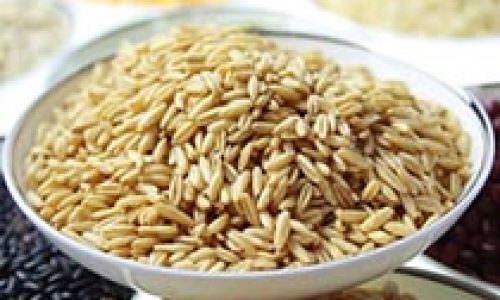Introduction
Oatmeal, derived from the hulled grains of oat plants, has been a staple in numerous diets across various cultures for centuries. Its versatility, nutritional profile, and ease of preparation have contributed to its enduring popularity. However, one question often arises among oatmeal enthusiasts and newcomers alike: should oatmeal be cooked or eaten raw? This guide delves into the intricacies of oatmeal preparation, exploring the differences between cooked and raw oatmeal, their nutritional impacts, digestibility, potential health benefits, and practical considerations for incorporating them into your daily routine. By the end, you’ll have a comprehensive understanding of how to best enjoy this nutritious grain.
Understanding Oatmeal: Types and Varieties
Before diving into the cooking debate, it’s essential to understand the different types of oats available. Each variety has unique characteristics that influence how they should be prepared and consumed.
-
Instant Oatmeal: These are pre-cooked, dried, and often flavored oats that require only hot water or milk to reconstitute. They are convenient but may contain added sugars and preservatives.
-
Quick-Cooking Oats: These oats have been partially cooked and rolled thinner than traditional oats, reducing cooking time to about 5 minutes. They retain more texture than instant oats.
-
Rolled Oats: Also known as old-fashioned oats, these are steamed and flattened into flakes. They take longer to cook than quick oats but offer a chewier texture and a nuttier flavor.

-
Steel-Cut Oats: These are whole oat kernels that have been cut into small pieces. They take the longest to cook, usually around 20-30 minutes, but provide the most robust texture and flavor.
-
Oat Groats: These are the whole, unprocessed oats that have only been hulled. They require the longest cooking time and have a dense, chewy texture.
Nutritional Breakdown: Cooked vs. Raw Oatmeal
The nutritional profile of oatmeal remains largely consistent regardless of whether it’s cooked or raw, but there are subtle differences that can affect its bioavailability and overall health benefits.
Cooked Oatmeal:
- Digestibility: Cooking oats breaks down some of their dietary fiber, making them easier to digest. This is particularly beneficial for those with sensitive stomachs or digestive issues.
- Nutrient Absorption: Cooking enhances the availability of certain nutrients, such as beta-glucan, a soluble fiber that helps lower cholesterol and stabilize blood sugar levels.
- Texture and Flavor: Cooked oatmeal has a softer texture and a more pronounced oat flavor, making it more palatable for many people.
- Antioxidant Activity: Some studies suggest that cooking oats can increase their antioxidant activity, potentially enhancing their protective effects against oxidative stress.
Raw Oatmeal:
- Fiber Content: Raw oats retain their full fiber content, which is beneficial for promoting regular bowel movements and maintaining a healthy gut microbiome.
- Enzyme Activity: Eating raw oats may preserve the activity of natural enzymes present in the grain, though the significance of this is debated.
- Caloric Density: Raw oats are generally lower in calories per serving when compared to cooked oats because they absorb water during cooking, which increases their weight and calorie content.
- Texture and Palatability: Raw oats have a chewy, crunchy texture that some people prefer, but they can be harder to swallow and may not be appealing to everyone.
Health Benefits of Oatmeal
Both cooked and raw oatmeal offer a range of health benefits, making them a valuable addition to a balanced diet.
- Heart Health: The soluble fiber beta-glucan found in oats helps reduce bad cholesterol levels, lowering the risk of heart disease.
- Blood Sugar Management: The fiber content of oats helps stabilize blood sugar levels, making them a suitable choice for individuals with diabetes or prediabetes.
- Weight Management: High fiber content increases satiety, helping to control appetite and support weight loss efforts.
- Digestive Health: The fiber in oats promotes healthy bowel movements and supports a healthy gut microbiome.
- Energy Boost: Oatmeal provides a steady release of energy thanks to its complex carbohydrates, making it an excellent breakfast choice for athletes and active individuals.
Digestibility and Tolerance
Digestibility is a crucial factor to consider when deciding whether to eat oatmeal cooked or raw.

Cooked Oatmeal:
- Easier on the Stomach: Cooking oats breaks down their cell walls, making them easier to digest and less likely to cause gastrointestinal discomfort.
- Reduced Gas and Bloating: For those prone to gas and bloating, cooked oats are generally more tolerable.
- Enhanced Nutrient Absorption: Cooking improves the absorption of nutrients, ensuring that you reap the full benefits of oatmeal’s nutritional profile.
Raw Oatmeal:
- Higher Fiber Intake: Raw oats provide a more concentrated source of fiber, which can be beneficial for those seeking to increase their fiber intake gradually.
- Potential Digestive Discomfort: For some individuals, the high fiber content of raw oats can cause bloating, gas, and digestive discomfort.
- Chewing Factor: Proper chewing of raw oats is crucial to aid digestion. Swallowing large pieces can lead to indigestion.
Practical Considerations
When incorporating oatmeal into your diet, several practical factors influence whether you choose to cook it or eat it raw.
Convenience:
- Cooked Oatmeal: Requires preparation time and access to cooking facilities. However, with the advent of microwaveable and instant oatmeal options, cooking time has been significantly reduced.
- Raw Oatmeal: Extremely convenient, as it can be eaten straight from the package or added to smoothies, yogurt, or salads without any cooking.
Taste and Texture:
- Cooked Oatmeal: Offers a creamy, porridge-like consistency that many people find comforting and satisfying. Flavor can be enhanced with various toppings and spices.
- Raw Oatmeal: Has a crunchier texture that some may prefer. It can be incorporated into recipes without altering their overall texture too much, making it versatile for smoothies, baking, and more.
Storage and Shelf Life:
- Cooked Oatmeal: Should be stored in the refrigerator and consumed within a few days to prevent spoilage.
- Raw Oatmeal: Has a longer shelf life and can be stored in a cool, dry place for several months.
Incorporating Oatmeal into Your Diet
Whether you choose to eat oatmeal cooked or raw, there are numerous ways to incorporate it into your diet for maximum nutritional benefit.

Cooked Oatmeal Recipes:
- Classic Porridge: Use milk or water to cook rolled or steel-cut oats. Add honey, fruit, nuts, and seeds for added flavor and nutrition.
- Overnight Oats: Mix rolled oats with milk or yogurt, chia seeds, and a sweetener. Refrigerate overnight for a creamy, ready-to-eat breakfast.
- Savory Oatmeal: Cook oats with vegetables, herbs, and spices for a hearty, nutritious meal.
Raw Oatmeal Ideas:
- Oat-Based Smoothies: Blend raw oats with fruit, yogurt, and a liquid base for a fiber-packed smoothie.
- Energy Balls: Combine raw oats with nuts, seeds, dried fruit, and a binder like honey or peanut butter to make portable snacks.
- Oat-Crusted Chicken or Fish: Use raw oats to create a crispy crust for baked chicken or fish.
Conclusion
The debate on whether oatmeal should be cooked or eaten raw ultimately boils down to personal preference, dietary needs, and convenience. Cooked oatmeal offers ease of digestion, enhanced nutrient absorption, and a traditional, comforting texture. Raw oatmeal, on the other hand, provides a quick, convenient option with a higher fiber content and a crunchy texture that can be incorporated into various recipes.
Ultimately, the best approach is to experiment with both cooked and raw oatmeal to see which you prefer and how it fits into your lifestyle. Whether enjoyed as a hearty breakfast, a nutritious snack, or a versatile ingredient in various recipes, oatmeal remains a staple food that offers numerous health benefits and culinary possibilities. So, the next time you’re wondering whether to cook your oats, remember that the choice is yours—and both options are equally valid and nutritious.




0 comments